Editor’s Note: I’m excited to introduce the contribution below from Tamara Keel, who happens to be one of my personal all-time favorite gun writers, not to mention a walking encyclopedia of firearms knowledge and an overall swell person to know. Tam’s writing can be found all over the web and in print, including Shooting Illustrated as well as her own blog.
-CB
When I first got into the gun business, it was the early 1990s and I was working in a gun store that was just on the outer fringe of metro Atlanta’s Oort Cloud of shopping malls and chain restaurants. It still had that small-town Southern atmosphere, so first-time gun buyers were rare. When I encountered one, it was usually a guy who’d just moved his family into one of the new subdivisions that were popping up like mushrooms to accommodate commuters to Atlanta’s burgeoning north side.
Then came the “Assault Weapons Ban” of 1994, followed by a series of gun sales spikes thanks the Y2K panic, the 9/11 attacks, the Great Panics of ’08 and ’12, and the current spate of terrorist shootings. I’ve worked at several different gun shops during all of this, first in suburban Tennessee and then in Indianapolis. Over that time, the demographic of first-time buyers I encountered has shifted. Instead of young, suburban dads, their ranks now include more older people, middle-aged housewives, and grandparents.
Often these new buyers once owned a gun when they were younger and left it behind at some point. It may have been a part of their former rural lifestyle, or perhaps they had experience with firearms during their service in the draft-era military. Now, however, some news story made them decide that it was high time to look into getting a concealed carry permit so that they could look after themselves in uncertain times.
These new customers arrived at a time when the market was more prepared than ever with high-quality firearms designed specifically with concealed carry in mind. No longer limited to the usual categories of little pocket pistols in traditional mousegun calibers and classic small-frame revolvers, but several manufacturers had recently released slim, high-quality compact single-stack 9mm pistols at very competitive prices. The Smith & Wesson M&P Shield and the Glock 43, in particular, became the new standards in this class, selling in droves, and often to these newcomers to the world of handguns.
These little nines, however, had within them the seeds of problems down the road for this class of customer.
First, there’s no way around the fact that a tiny little pistol, weighing less than a pound and a half fully loaded, is going to have some recoil. Not wrist-snapping or anything, but enough that it can be startling to the novice shooter.
Second, the light weight of the pistol’s slide and the striker-fired action means that the recoil spring absorbs much of the slide’s rearward velocity, requiring it to be a relatively heavy spring. The tiny slide, however, does not easily afford the area for the sort of over-the-top, whole-hand grab that works so efficiently for those with little grip strength. As a result of this combination, I watched many customers struggle to operate the slide on these guns.
Lastly, being a recoil-operated firearm, the gun requires a firm platform to work against. However, the guns were often sold with standard velocity, or even “reduced recoil” or “lite” loads. As a result, in the hands of someone whose grip strength was already compromised by small stature, age, or infirmity, these guns often required an employee to assist with the clearing of failure-to-eject malfunctions on the range.
Despite the popularity of these nines, their potential to cause issues for a certain class of first-time gun buyers should leave us asking whether there might be a better option.
Enter the “Grandma Gun”: The Sig P250 Compact
I received a test gun from Sig Sauer, a P250 Compact that was different from the ordinary P250, in that it was chambered for the .380 ACP cartridge.
Now, I’m not normally a fan of the smaller round for self-defense, but the P250C, which was roughly Glock 19-sized, packed fifteen of them in the magazine. That’s a lot of BBs. And with a 3.9” barrel, the gun gets the most out of the .380 cartridge. Full metal jacket ammo usually averaged on the north side of 900 feet-per-second, and Speer’s 90gr Gold Dot hollow points averaged a blistering (well, blistering by .380 standards) 1080fps.
Secondly, the P250 has a double-action-only action that is nearly ideal for someone who’s not going to be shooting for a hobby. A problem with shooters who don’t spend a lot of time ingraining trigger-finger discipline is what some instructor friends call “woobie checking”; in moments of stress, in force-on-force or scenario-type training, the shooter’s finger will unconsciously dart down to check the trigger, as though the shooter is trying to subconsciously reassure themselves it’s still there. The P250 has enough pull weight at seven-and-a-quarter pounds, combined with the length of a true double-action pull, to make it resistant to “woobie checking”, and still the weight and length of pull are not too heavy or long to preclude decent shooting by most any shooter. (Protip: If you don’t tell a novice that a double action trigger is supposed to be “hard to shoot”, they won’t act like it is.)
Finally, and most importantly, being hammer-fired and recoil-operated, the gun is equipped with a crazy-light recoil spring. Everybody I’ve let shoot this gun comments on how easy it is to work the slide. There’s no way to describe it, relative to most centerfire pistols; it’s more akin to working the slide on one of the full-size rimfire pistols like the M&P22 or a 22 rimfire conversion on a Glock.
Grandma’s Mission
Most of these new first-time gun buyers are not buying kydex AIWB holsters, tuckable spare mag carriers, and centerline fixed-blade knives to go with their guns. Mabel and Arthur are not rolling at their local BJJ gym or showing up at USPSA matches. They’re not embracing a “CCW lifestyle” so much as buying some peace of mind, for which they will happily take a class or two (we had great success in selling two-hour basic introductory classes to this demographic) but are not willing to make major sacrifices.
The “Grandma Gun” is going to be used to answer the door with more peace of mind. It might go in a purse or glovebox on occasion and otherwise probably sit in a lockbox by the nightstand. Which is more likely to effectively fill this role: A small pistol which is difficult to manipulate, requires a perfect grip to run reliably, and has off-putting recoil? Or an easy-to-manipulate, easy-to-shoot gun with manageable recoil?
This is a case of a growing customer base looking for an ideal pistol, and a pistol just waiting to be discovered by its ideal target demographic.
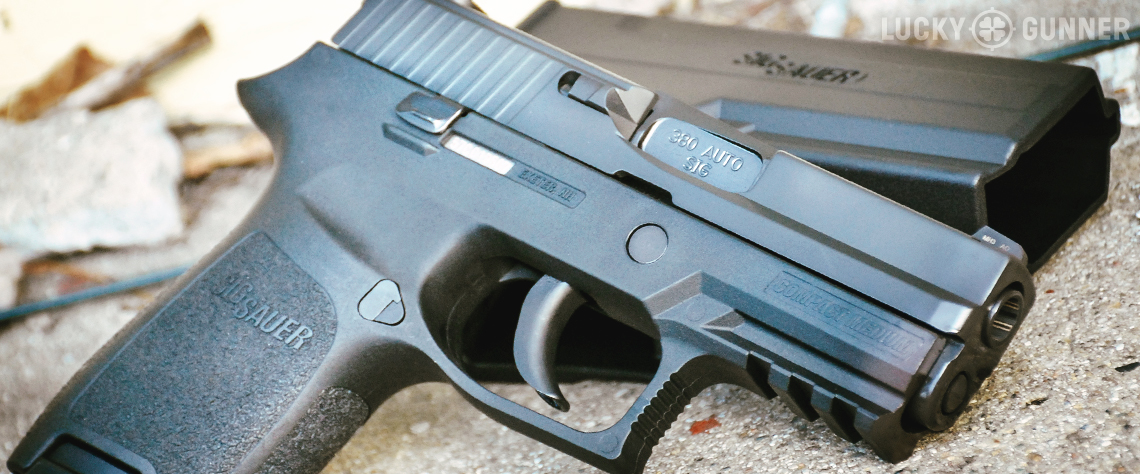
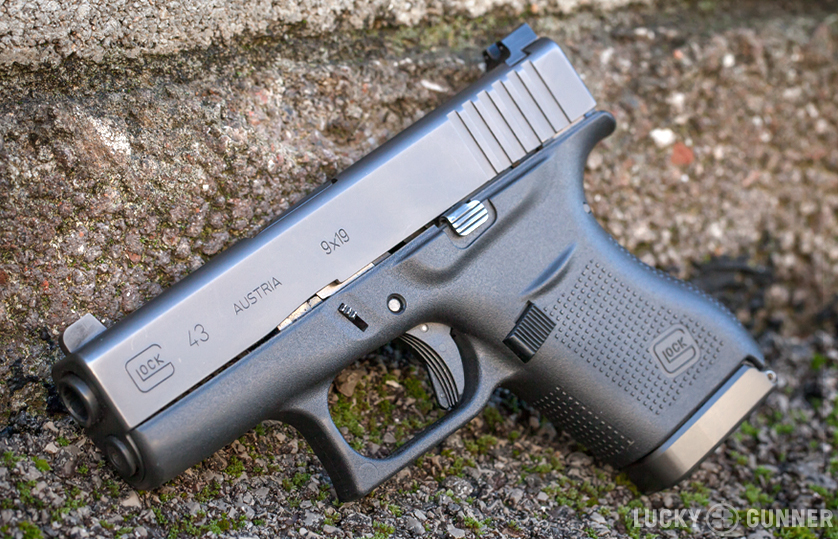
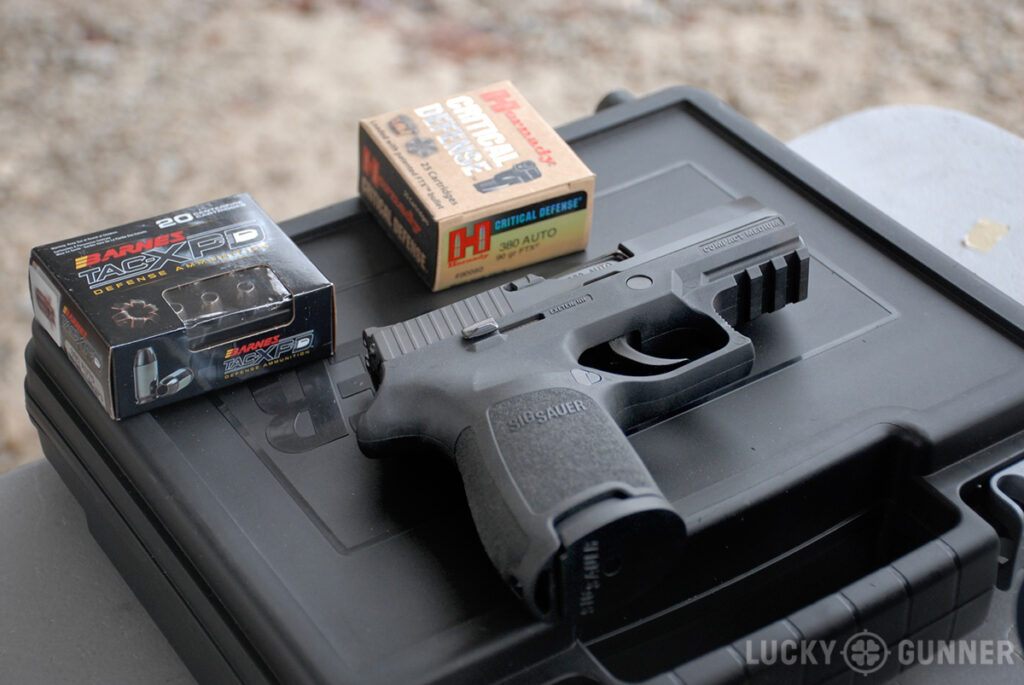
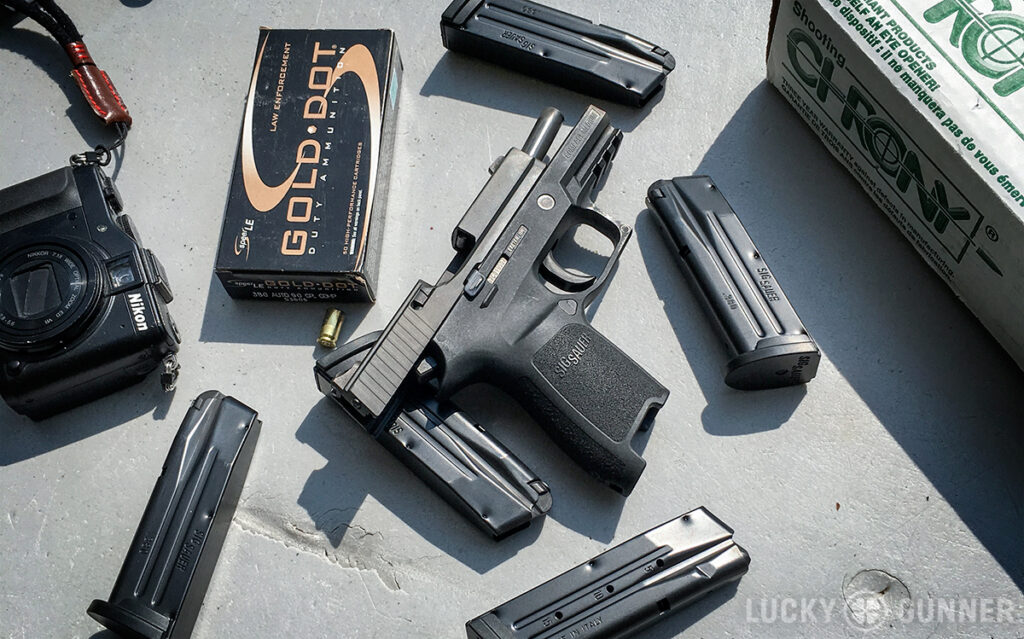
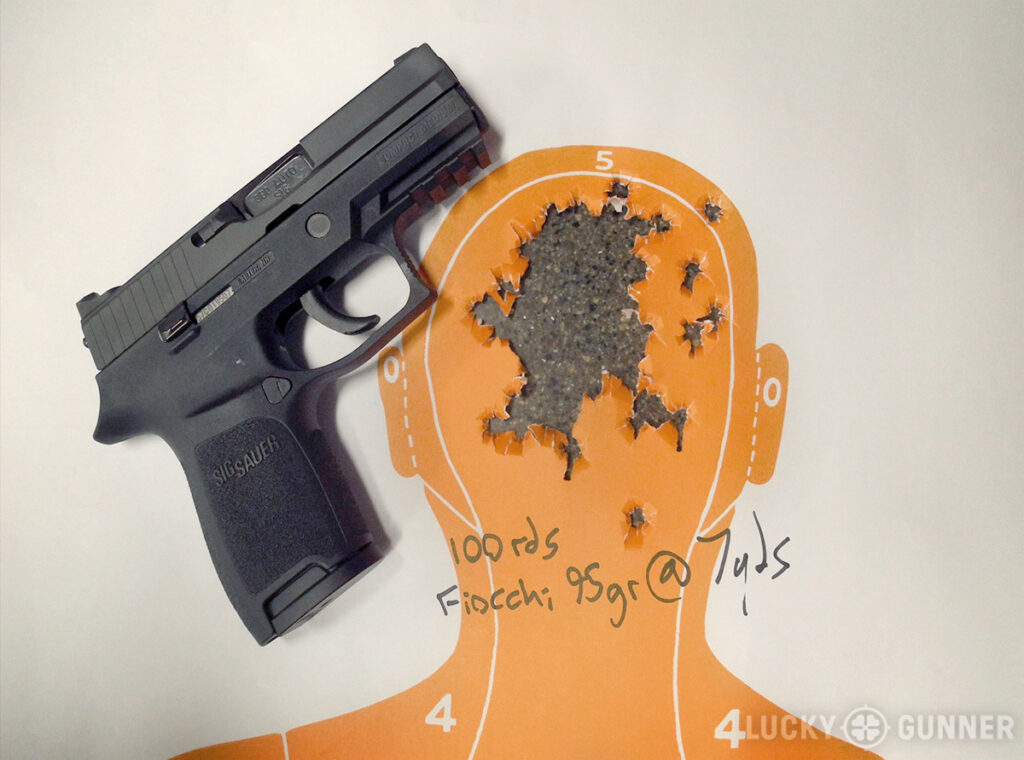
Great article! My first firearm was a Sig Sauer P250, but in 9mm. I absolutely that the slide is easily manipulated. Also, the double action trigger is not as bad as most people think. It is far lighter than a double action revolver trigger, which most people recommend for women, or elderly first time gun owners. I would say this is a great first gun for anyone who is not going to be an avid shooter.
Nice summary/overview.
And a reminder that most guns DO fill a niche that just happens to not be on my belt.
I purchase a sig 938 and had so many problems I sold it.I sent it in 3 times and after calling back and talking to them I decide they didnt have a fix.Also came to the conclusion that sig lets the people do the testing.I know that wont happen again!!!
Yeah, usually best to wait for a Gen2 from Sig. I haven’t heard of problems with the 938s, buty you might want to try out the Sig P290rs (available in .380 and 9mm)
You won’t be beta testing. That was done via the first P290 which of course had all sorts of issues. The RS has a restrike capability I don’t use, but both of mine have been perfectly reliable through several thousand rounds (8-9 thousand on my first now with a friend and about 5000 on my second) and surprisingly accurate for a micro compact.
It’s a bit heavy for a little gun but that just soaks up recoil if you like +P. Once I learned the DAO trigger, it was significantly more accurate than my S&W Shield (and smaller and no heavier).
Sorry, but if Sig can’t get it fixed than they should have gave my money back. said it was nothing wrong with gun,favorite words.So why did sig keep working on it?If that is how sig treats there costomers you can have them!!Look on utub and tell me u haven’t heard.LOL
The barrel of the p250c in 380acp is actually 3.6″ long, not 3.9″ as the article and some gun sales websites proclaim.
This is a great article about a pistol that I did not know existed. I’m looking for something different than a striker-fired pistol and this seems like a good option (I’ll take mine in 9mm though). I also think that a larger .380 acp is better than the smaller pistols out there — Again thank you
Had a P250c in .380. Lived in a attached townhouse at the time and figured it might lessen over penetration on any missed shots. Loved the gun, eventually sold it, now regret the sale. Also have had P250’s in 9MM (c & sc) and in .45 (sc). Like them but sold them too. Tastes change I guess.
An acquaintance bought a P250 in .45 as his first pistol, not knowing what he had. It’s about the least expensive Sig you will find. It’s sort of disdained by the Sig DA/SA crowd. His first experience was miserable as neither he or his “expert” friends, unused to a DAO trigger, could hit a barn. They were all convinced the sights were off and hated the trigger. Before taking it to a ‘smith he left it with me to try. It’s a trigger you have to get used to. Work with slowly to get the feel of the long pull and release. There are a couple of YouTube videos about it. It doesn’t take long. You realize how silky smooth the trigger is. Maybe 2 range sessions. before I was tearing big ragged holes. I shot it better than my Glock. Once I figured it out, I taught him in about a half hour. Because of it, I later bought a Kahr, which has a similar feeling trigger. Being a striker gun, the slide is much stiffer than the P250.
Thanks Tam.
Well… I’m not grandma…. I’m grandpa and I have the Sig Sauer P320 (which is so like the P250 that some parts are interchangeable. Anyway, I carry it (concealed) in 40 cal every day and have the caliber exchange kit for 9mm (I can change calibers inside of two minutes)… so I do a lot of my practicing in 9mm to save money on Ammo. I love the trigger as it is smooth and has a short quick reset. I have always carried a 45ACP before and this is my first striker fired gun (old habits die hard) but I am totally happy with the change. I have to admit that I was somewhat dubious about not having an external safety but, when I was honest with myself, I realized that getting comfortable with a safety to make up for a mistake on my part was not the way to go anyway. I have to say that this is the most accurate, easiest to carry, easiest to care for, and most versatile gun I’ve ever owned. Way to go, Sig!
I have recently switched from striker to…Sig P250! The 9mm sub compact slide on a medium frame makes for an easily concealed piece with 15+1 on board. More important to me is, the DAO makes it slightly harder to fire than it’s striker counterparts. Why? 1911 platforms and subsequent striker designs make it easy and rapid for a soldier to engage an enemy. Being my own worst enemy, I want more effort in the process of placing a shot. Regulars and pros ND, & I’m neither. My DAO trigger is one more layer of feedback in addition to all the modern training standards and 4 cardinal rules. We all have an obligation to protect the public from ourselves in exercising our legal rights.
I have the Sig p250 subcompact in 9mm. I came to it learning on a revolver. A gun that is a favorite of Grannies and serious gunners like Nutnfancy has got to be a good choice. If I am not mistaken, I think the p250 .380 was discontinued, and only the 22, 9, 40, 357, and 45 are available?
I’ve three D/A only semi autos a S&W 4586, S&W M&P45 and a full sized Sig P250 in .45 Auto.
I have a S&W M39-2 with DA/SA trigger and it is without a doubt, the hardest D/A trigger I’ve had to master. In S/A it’s a fine pistol, but the first round in D/A was a real bear, at least for me.
The easiest way to overcome the problem was to insert a snap cap and dry fire at a dot on the wall. I found that if I choked up to the first knuckle and placed a finger of my support hand on the front of the trigger guard, that one irritating flier went away.
As for my D/A only semi autos, I prefer the narrow trigger of the 4586 to the wider ones on the p250 and M&P 45. The 4586 trigger is heavier than the other two, but it does feel the smoothest and more like a D/A revolver.
Thanks for the article. I’ve been looking at this pistol, among others, as a possible AIWB conceal carry. I have some striker-fired pistols but I am a bit leery of carrying those appendix. However, I thought the Sig 250 was discontinued after the P320 was released. Is this true?
No. 320 is striker, but uses same grip platforms. Both are available, although I’m pretty sure .380 isn’t in either flavor
This was one of the articles that finally encouraged me to buy a P250 after looking at them for years.
Being a novice with firearms I originally wanted something with a safety, like my Bersa Thunder 380. It also would help me feel more secure when I reholster particularly when I carry AIWB. However, like yourself, I don’t like safeties. It is one more thing to do when I need to put it into action. With the P250 I can pull it out and just pull the trigger to use and then place my thumb over the hammer when I reholster. Simple and safe! And that trigger is a little long but it is so smooth.
Finally, the modularity helps me here in NY. I can change size and caliber without having to go through the bureaucratic mess than the politicians have erected here.
Always good to hear from Tam on these topics.
Grandpa here. Grew up in the rural South, no stranger to guns and have fired plenty decades ago belonging to my relatives. Moved on to become an urban electrical engineer and left gun culture behind, altho maintaining nothing but respect for those who kept it as part of their everyday life.
With all the craziness trending in the Obama years, I decided to get a pistol of my own four years ago. I justified it to my quite liberal wife by telling her when the day came that we needed a gun, we wouldn’t be able to go and buy a gun. I made a few trips to the local gun range to try out their rental pistols and pretty quickly decided that I was more interested in a hammer fired than a striker fired gun. For a while I was seriously considering getting a CZ-75, which I still think is a great gun. However, the safety and decocker added unwanted complexity, and I was a little unsure about breakdown and maintenance.
Then I took a NRA basic pistol class from a local instructor because I knew the 10-20% of new stuff I would learn would be worth it – and it was. He had an extensive collection of pistols and let me try them all out. One was a P250. After one clip I knew that was the gun for me. Simple to learn, easy to shoot, easy to strip, easy to reassemble, and once you learn that trigger, dead bang accurate. I can put holes inside the 6 ring all day long from 7 yards with a P250 in either 9mm or 0.40 with no routine practice, and that’s good enough for me.
Not only is the P250 simple with no safety or decocker to worry about, but its modularity is a real plus. The P250 is not just a gun but a system of interchangeable parts that can give you the size, grip and caliber just right for you. I have settled on a subcompact using the compact clip to give me the smallest possible size with a little extra grip length to give my pinky finger a place to be. This is not the sexiest or most rapid-fire gun like a Glock but it is the right gun for me.
Thanks for your excellent article and let me agree that the main points you bring up are right on target.
Two other considerations worth mentioning. A P250 can be easily configured for left-handed shooting (an important consideration for use by my wife) and this is a pretty uncommon feature.
Secondly, everybody talks about the disadvantages of the P250 DAO (Double Action Only) trigger but never mention its greatest strength – dry firing with an UNLOADED pistol and trigger practice at home.
Firing a DA/SA (initial Double Action / subsequent Single Action) striker pistol while unloaded only allows one practice trigger pull before having to rack the slide to re-cock the striker before the next trigger pull. That’s no way to practice dry fire, and an impossible way to practice for someone who lacks strength to rack the slide easily in the first place. And that trigger pull experienced by dry firing a striker pistol is only the “hard, long, initial” DA pull and never the “softer, shorter, faster” SA pulls after an initial shot that can only be experienced at a professional range while sending lead into the back wall.
Every single time you ever pull the DAO trigger on a P250, the trigger action will feel exactly the same. Firing it in your own home repeatedly WHILE UNLOADED is a great learning and training experience. With the P250 DAO trigger, it’s like a toy cap pistol. Pull the trigger as many times as you want with no slide racking required, and every trigger pull is creating an accurate muscle memory of what to expect in live fire. Put in a battery-powered laser cartridge and you can even “target practice” at home with a P250.
Now I understand that dry firing at home requires being ABSOLUTELY CERTAIN that you have an unloaded pistol, and is no substitute for range practice with live ammunition. But for somebody who is fanatical about safety, dry firing can be valid familiarization training – particularly for someone who is not a regular visitor at the professional firing range.. Dry fire training / practice is easy on the P250, and virtually impossible on other striker fired pistols.
Great input! Also, seconded on the P250’s ability to dry-fire better than any other pistol out there. If you use a laser cartridge, you have a bottomless magazine to be used on a laser target system.
I sold and replaced a HK p7 m13 with a full size p250 9mm equipped with Streamlight tlr4 and love shooting it. I have about 750 rounds of good and crappy ammo through it and have had no issues at all. It is an extremely simple pistol to service/ disassemble and clean. I thought I would regret replacing my p7m13 with the p250 but could not be any happier with my Sig and the extra $1000 I have in my savings account as a result of the transaction. Also bought a Huckelberry Tactical kydex holster to keep it and myself safe while camping in deep woods.
The Sig P250 has the most God-awful bang switch on the planet: it twisted my trigger finger so severely that I had to wear a splint on it for a month. How did it happen?
First, the trigger doesn’t break until it virtually hits the back of the trigger guard.
Next, upon firing, the muzzle flip is so strong, you’d think the barrel was pointing downward instead of forward.
Lastly, as the muzzle flips skyward and the trigger is pressed backward, the gun torques your finger like an impact wrench on a lug nut. There isn’t enough time to get your finger out of harm’s way.
Besides, why buy a P250 when the P320 has a far better trigger system?
You hurt your finger? My tiny wife shoots hers in 380 very well.
Better is relative. Some feel a light trigger is not appropriate for every situation, and took the time to train and shoot a DA pistol well.
I don’t know what in the world you did when firing that gun, but it wasn’t the gun’s fault.
My wife fired her friends p250 in 380s and loved it! Ive been on the hunt for one ever since this is our unicorn gun, cant find one in 380 anywhere. I wish sig didn’t give up on this pistol so easily.
My first pistol was a P250C in 9mm. I consider it to be a great first gun. Hard to ND, easy to carry appendix, and practicing with a DAO trigger makes you a good shot, especially when you move to anything else.
I currently carry a striker fired full size pistol, but am seriously considering moving on to a DA/SA for EDC.
The P250 is amazingly accurate and easy to shoot if you have a reasonable amount of trigger control, and none of my striker firearms break as clean as my p250, even my m2.0 9mm with apex trigger which was amazing out of the box before any upgrades or polishing. The p250 definitely needs to have the FCU broken down and lubed up out of the box, the springs in the hammer and the trigger bar needed a nice polish and lube, there was a ton of residue inside my p250 hammer where the springs sit as well, after a nice soak in a solvent and a clean its so smooth, night and day really. My only issue with the P250 is the grip module sizes, the medium that came with my 40.sw with 22lr conversion was like an extra large in any other manufacture spec, my dad could barely get the trigger to reset comfortably with a medium grip. After an upgrade to a small it’s perfect. It makes my wonder who has monster hands that need the large grip with the large trigger, and there WAS a small trigger you could get for more comfort but it has since been discontinued. Aside from that, I love how accurate it is and the long smooth trigger is great for focusing on your sight picture while you pull, I find the trigger is so smooth it goes off before I realize the trigger break which is perfect for me, tons of people stage the trigger which works good but its no replacement for good trigger fundamentals.